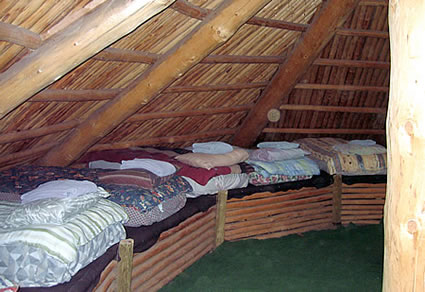
 2
2




 3
3








How permies.com works
What is a Mother Tree ?








 1
1





 1
1





Seed the Mind, Harvest Ideas.
http://farmwhisperer.com








 1
1




 that is, doing something weird in a way which gets you noticed. Some private rural landowner living in a debris hut is almost certainly never going to be apprehended, in my opinion, as long as he pays his property tax.
that is, doing something weird in a way which gets you noticed. Some private rural landowner living in a debris hut is almost certainly never going to be apprehended, in my opinion, as long as he pays his property tax.
Idle dreamer




www.traditional-skills.com




www.traditional-skills.com
 2
2




 1
1




 1
1




Diversified Food forest maker . Fill every niche and you'll have less weeds (the weeds are the crop too). Fruit, greens, wild harvest, and nuts as staple. Food processing and preservation are key to self self-sufficiency. Never eat a plant without posetive identification and/or consulting an expert.
 4
4








Shenanigans of the sheep and wooly sort.. And many more.. https://www.instagram.com/girlwalkswithgoats/
Papa always says, "Don't go away angry... just go away."
 2
2




Shenanigans of the sheep and wooly sort.. And many more.. https://www.instagram.com/girlwalkswithgoats/
Papa always says, "Don't go away angry... just go away."
 1
1





 2
2




 2
2




"You must be the change you want to see in the world." "First they ignore you, then they laugh at you, then they fight you, then you win." --Mahatma Gandhi
"Preach the Gospel always, and if necessary, use words." --Francis of Assisi.
"Family farms work when the whole family works the farm." -- Adam Klaus




R Scott wrote:What would happen if you built it so the debris was composting? would it self-heat, get too hot, or stink a person out?
Shenanigans of the sheep and wooly sort.. And many more.. https://www.instagram.com/girlwalkswithgoats/
Papa always says, "Don't go away angry... just go away."
 1
1








Joe Skeletor wrote:There was a project about 15 years ago in chicago with the Resource Center where a guy buried an old van or station wagon in a huge pile of compost over the winter to live in. There's an article (don't know if it ever made it on the internet) about it in a zine of the time. From what I remember, it actually got too hot to live comfortably in. I would imagine you would need some really good ventilation system in place. It would be interesting if somebody tried this kind of thing again!
Shenanigans of the sheep and wooly sort.. And many more.. https://www.instagram.com/girlwalkswithgoats/
Papa always says, "Don't go away angry... just go away."




Shenanigans of the sheep and wooly sort.. And many more.. https://www.instagram.com/girlwalkswithgoats/
Papa always says, "Don't go away angry... just go away."
 1
1





Shenanigans of the sheep and wooly sort.. And many more.. https://www.instagram.com/girlwalkswithgoats/
Papa always says, "Don't go away angry... just go away."
 1
1




My project thread: http://www.permies.com/t/20399/projects/Maine-Master-Plan




Jessica Gorton wrote:The way I learned about debris huts, you stuff them full of leaves and debris and crawl into the mess, like a giant sleeping bag made of debris. You heat it with your body heat, so you need the insulation right up against you. What you're describing sounds more like a wikiup or similar native dwelling of such tribes as the Abenaki and others that lived in the boreal latitudes. In such a dwelling you could have a fire pit, while in a debris hut, at least as I learned how to make it, there's no fire, just lots of stuffing.
Shenanigans of the sheep and wooly sort.. And many more.. https://www.instagram.com/girlwalkswithgoats/
Papa always says, "Don't go away angry... just go away."




My project thread: http://www.permies.com/t/20399/projects/Maine-Master-Plan

 5
5






QuickBooks set up and Bookkeeping for Small Businesses and Farms - jocelyncampbell.com
 1
1












Outdoor and Ecological articles (sporadic Mondays) at http://blog.dxlogan.com/ and my main site is found at http://www.dxlogan.com/
 2
2






Outdoor and Ecological articles (sporadic Mondays) at http://blog.dxlogan.com/ and my main site is found at http://www.dxlogan.com/

|
For your bravery above and beyond the call of duty, I hereby award you this tiny ad:
Rocket Mass Heater Resources Wiki
https://permies.com/w/rmh-resources
|








